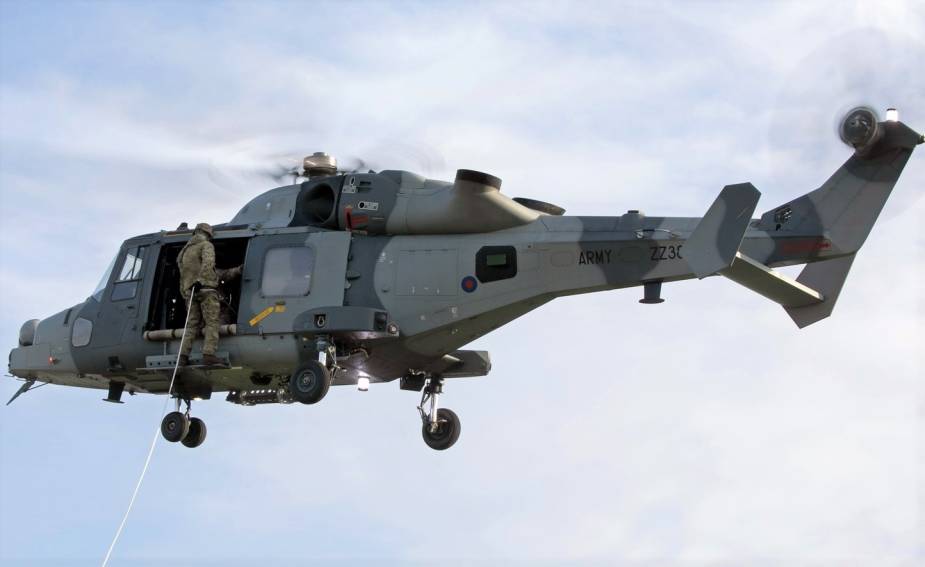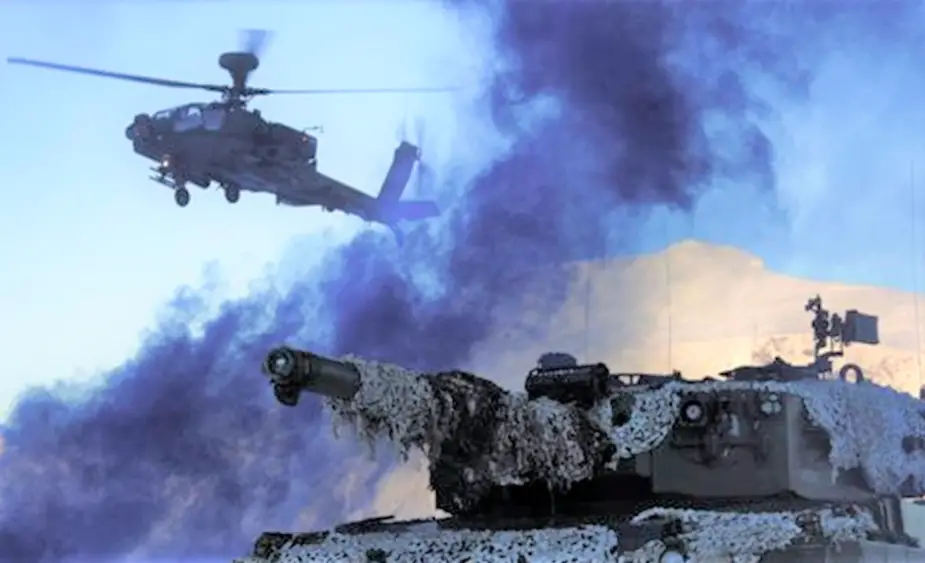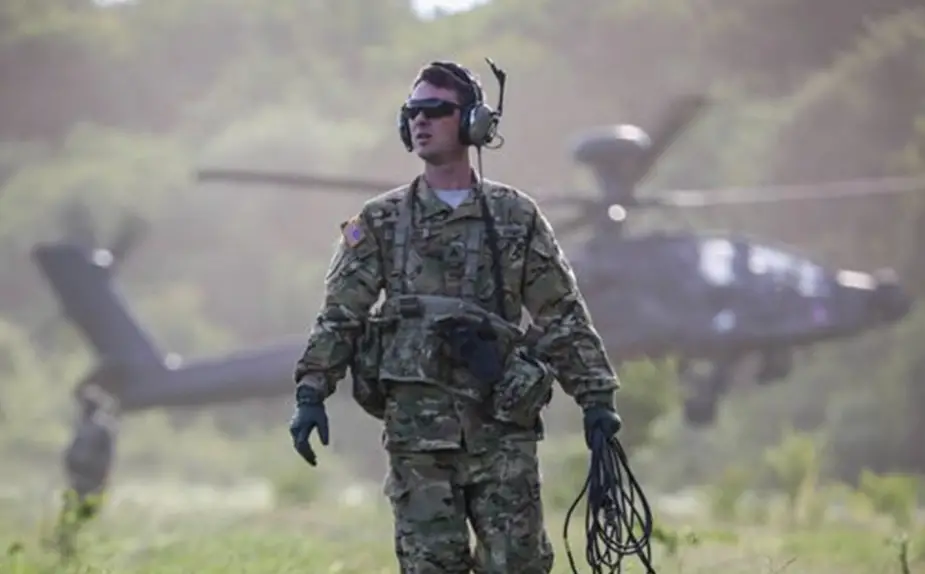Under Future Soldier, combat aviation will form a key part of how the British Army will fight. The newly-formed Brigade brings together reconnaissance and attack aircraft for the first time, as reported on British Army’s website.
Follow Air Recognition on Google News at this link
 Designed and manufactured in the UK, the Wildcat is made in Yeovil, close to where the Wildcat Regiment is based. (Picture source: British Army)
Designed and manufactured in the UK, the Wildcat is made in Yeovil, close to where the Wildcat Regiment is based. (Picture source: British Army)
Formed on April 1, 2020, 1st Combat Aviation Brigade brings together the reconnaissance and attack elements of Army aviation, allowing the Brigade to be a rapidly deployable capability, with wide-ranging utility.
Under Future Soldier, combat aviation – and the Brigade – are central to the Global Response Force, and to how the Army will fight on the future battlefield. The Global Response Force will provide very high-readiness capability, with 1st Aviation Brigade working with 16th Air Assault Brigade. The Aviation Brigade will be able to support Air Assault troops or provide an Aviation Task Force (ATF). It can work in the 'close' fight - on the frontline, or even beyond it.
Brigadier Paul Tedman, Commander of the 1 Aviation Brigade, said: “The ATF will be able to provide attack and reconnaissance helicopters to hot spots at a speed of relevance, over operational distances with peer overmatch firepower. [The] Global Response Force (GRF) ... has really reoxygenated air manoeuvre capability in the Army and provided us a clear mandate. If we can place the GRF in the right place, at the right time, it will have the ability to change behaviours; it offers the choice to the UK Government, and the Army.”
Combat Aviation will be part of the Army’s ‘system of systems’ approach to warfighting. Recently described in a report by the Royal United Services Institute as ‘one of the most lethal and agile Brigades in the Army,’ the Brigade can deploy rapidly and over large distances. Given its relevance, a new Aviation Brigade Combat Team (BCT) forms part of the Future Soldier transformation plan.
Under Future Soldier, every aspect of how the Army is organised and equipped will be looked at. As a Brigade, 1st Combat Aviation is also modernising how they recruit and train their people. This includes Project Morden, which will review the end-to-end Army Air Corps recruitment and retention. Parallel work is ongoing with the Royal Electrical and Mechanical Engineers (REME), who repair and maintain the aircraft.
Brigadier Tedman said: “I’m clear: people are at the heart of aviation’s transformation, I always use General Patton’s great quote, ‘we’ll fight wars with equipment, but they are won by people.’ We recruit nationally, and perhaps have one of the most diverse workforces in the Army. We were the first combat arm to recruit women, as long ago as 1989. My co-pilot in Iraq (in 2010) was female, and today we have females in every role: aircrew, engineers and ground crew. We are blessed with a rich mixed-faith organisation; SSgt Singh has just been made an MBE for his efforts supporting training. That diversity and mix of cultures bring a real range of talent to the organisation. Plenty of people want to work for us!”
Integration is essential for a modernised, digitally connected Army. For combat aviation, this might mean integration across the organisation, with equipment and with people; or how the Brigade integrates into a corps, a division, or works with other brigades. It will also mean more integrated equipment. The transformation plan will bring 50 new ‘E’ model Apache (AH-64E) – said to be the best attack helicopter in the world. It will have digital connectivity, and be capable of commanding and flying drones, something known as advanced teaming.
 The transformation plan will bring 50 new ‘E’ model Apache (AH-64E) (Picture source: British Army)
The transformation plan will bring 50 new ‘E’ model Apache (AH-64E) (Picture source: British Army)
Wildcat, the reconnaissance helicopter, is also a world-class aircraft. Designed and manufactured in the UK, the Wildcat is made in Yeovil, close to where the Wildcat Regiment is based. It replaced the Gazelle, and represents a significant improvement in capability.
Brigadier Tedman said: “We use [Wildcat] as a Strike Co-ordination and Reconnaissance platform to find the enemy and then cue strikes. It is also very versatile and recently flew nearly 70% of all JHC tasking in support of Op RESCRIPT in support of the COVID Response Force. Interoperability is also about procedures and well-rehearsed command and control - and we’re finding our way. In many ways, we have been chucked into the Army’s manoeuvre Brigade deep end and have much to do, but we’re fast learners and I’m confident we’ll be declared Fully Operational on schedule, in 2023.”
Next-generation capability is also set to become integral to the Brigade, and the way it operates. Uncrewed Aerial Systems (UAS) – or drones – are likely to be used alongside the reconnaissance element of the force; ultimately replacing some current capability. Air-Launched Effects – a tube that fires mini-UAS for a range of effects – is one possible innovation.
Brigadier Tedman said: “However, I think the greatest change will come in the form of digital open architecture communications and Artificial Intelligence (AI) that will unlock true all domain operations. I judge that the brigade will go from strength to strength.”
 Combat Aviation will be part of the Army’s ‘system of systems’ approach to warfighting (Picture source: British Army)
Combat Aviation will be part of the Army’s ‘system of systems’ approach to warfighting (Picture source: British Army)
















